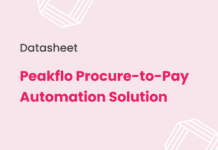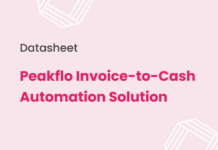In the world of e-commerce, marketplaces are thriving, offering a diverse range of products and services to consumers worldwide. However, managing transactions and payments within these marketplaces can be complex, especially when multiple sellers are involved. This is where split payment processing comes in, offering a streamlined solution for distributing payments to multiple recipients seamlessly.
What is Split Payment?
Split payment is a payment processing method that allows e-commerce businesses, particularly marketplaces, to split online payments into multiple recipients. It means that when a customer makes a purchase, the payment is automatically divided into several ledger accounts, with each recipient receiving their portion of the payment directly. This process eliminates the need for manual intervention, reducing the risk of errors and delays in payment distribution.
Example of Split Payment
Imagine you’re using a popular online booking platform to reserve a vacation rental for your upcoming trip. The platform allows property owners to list their properties, and you can choose from a variety of options based on your preferences.
When you find the perfect rental and proceed to book, the online booking platform uses split payment to handle the transaction:
- You enter your payment details and confirm the booking.
- The platform splits the total payment into different parts:
- The rental fee, which goes to the property owner.
- The platform’s service fee or commission.
- The platform deducts its service fee and transfers the remaining amount to the property owner.
This split payment process ensures that the property owner receives their rental income, while the platform earns its commission for facilitating the transaction.
Use Cases of Split Payments in Various Industries
The use cases below illustrate how split payments are used in various industries to streamline payment processing and ensure that funds are distributed accurately and efficiently among multiple recipients.
E-commerce Marketplaces: Platforms like Amazon or eBay use split payments to distribute funds between the marketplace and individual sellers. When a customer makes a purchase, the payment is divided, with the marketplace taking its commission and the rest going to the seller.
Crowdfunding Platforms: Websites like Kickstarter or Indiegogo use split payments to distribute funds raised for projects to the project creators. When a campaign reaches its funding goal, the platform splits the total amount, deducts its fees, and transfers the remaining funds to the project creator.
Event Ticketing: Ticketing platforms such as Eventbrite or Ticketmaster use split payments to distribute ticket sales revenue among event organizers, venues, and promoters. After deducting fees, the platform distributes the remaining funds to the respective parties.
Digital Goods and Services: Platforms selling digital goods or services, such as software marketplaces or content distribution platforms, use split payments to distribute revenue among content creators or service providers. For example, Apple’s App Store uses split payments to distribute app sales revenue between Apple and the app developers.
Online Booking Platforms: Platforms like Airbnb or Booking.com use split payments to distribute booking payments between the platform and the property owners. The platform deducts its fees and then transfers the remaining amount to the property owner.
Freelance Platforms: Platforms like Upwork or Freelancer use split payments to distribute payments between freelancers and the platform. When a client pays for a freelancer’s services, the platform deducts its fees and then transfers the remaining amount to the freelancer.
How Split Payment Works?
Let’s break down how split payment works:
1. Customer Makes a Purchase
When a customer decides to buy products or services from multiple sellers on an e-commerce marketplace, they add these items to their cart and proceed to checkout. This action initiates the payment process, indicating the customer’s intention to buy the selected items.
2. Payment Processing
Once the customer confirms the purchase, the total payment amount is processed through the marketplace’s payment gateway. The payment gateway securely processes the transaction, ensuring that the customer’s payment information is encrypted and protected.
3. Splitting the Payment
After the payment is processed, the marketplace’s system automatically splits the total payment into multiple parts. This splitting is based on predefined rules or percentages set by the marketplace, which determine how much of the total payment each seller will receive.
4. Distribution of Funds
Each seller receives their portion of the payment directly into their designated account. The marketplace handles these transfers, ensuring that each seller receives the correct amount for their products or services. The marketplace retains its commission or fees from the total payment before distributing the remaining amount to the sellers.
5. Transaction Reporting
After the payment has been processed and the funds have been distributed, the marketplace generates detailed reports of the transaction. These reports include a breakdown of payments to each seller, showing how much each seller received and how much the marketplace retained as commission. Transaction reporting helps the marketplace and sellers track their earnings and payments, providing transparency and accountability in the payment process.
Challenges of Manually Handling Split Payments
Manually handling split payments can pose several challenges for businesses, including:
1. Complex and Error-Prone
Manually calculating and distributing payments to multiple recipients can be complex and time-consuming. It increases the likelihood of errors, such as miscalculations or incorrect payment allocations, which can lead to disputes and financial discrepancies.
2. Limited Scalability
As the number of transactions and sellers increases, manually processing split payments becomes increasingly challenging. The process may become too time-consuming and labor-intensive to manage efficiently, limiting the scalability of the business.
3. Delayed Payments
Manually disburseing payments to multiple recipients can result in delays. This can lead to dissatisfaction among sellers and impact their cash flow, especially for smaller businesses that rely on timely payments.
4. Compliance and Regulatory Issues
Manually managing split payments may increase the risk of non-compliance with tax regulations and financial reporting requirements. Incorrectly allocating payments or failing to report transactions accurately can result in penalties and legal issues.
5. Increased Operational Costs
Manually handling split payments requires additional resources, such as staff time and labor, to process payments accurately. This can increase operational costs for the business and reduce overall profitability.
Benefits of Utilizing Automation Solution for Split Payment
Using a payment automation solution for split payments offers several benefits:
Simplifies Payment Processing: Automation streamlines the entire payment process, from splitting payments to distributing funds to recipients. This simplification saves time and effort for finance teams, allowing them to focus on other strategic tasks.
Eliminates Manual Work: Automation eliminates the need for manual calculations and payment transfers, reducing the risk of errors. This helps ensure that payments are accurate and timely, improving the overall efficiency of the payment process.
Improves Seller Retention: By automating split payments, sellers receive their payments faster and more reliably, enhancing their satisfaction with the platform. This, in turn, can lead to increased seller retention and loyalty.
Builds Trust with Sellers: Automation provides transparency in the payment process, giving sellers visibility into how payments are calculated and distributed. This transparency builds trust between the platform and sellers, fostering a positive relationship.
Provides Scalability: Automated payment solutions can easily scale to accommodate growing transaction volumes and an increasing number of sellers. This scalability ensures that the payment process remains efficient and effective as the business expands.
Streamline Split Payments with Peakflo’s End-to-End Payment Automation Solution
Split payment is a valuable tool for e-commerce marketplaces and other platforms that facilitate transactions involving multiple recipients. By automating the payment distribution process, split payment enhances efficiency, accuracy, and transparency, benefiting both marketplaces and sellers.
Peakflo’s Payment Automation solution offers a comprehensive payment automation solution that simplifies the process of splitting payments and managing fund flows for businesses. By replacing multiple systems typically used to manage payments, payouts, and vendors, Peakflo empowers finance, operations, and support teams with the tools they need to control fund flows and easily split transactions with vendors.
Rules-Based Payout Engine
Peakflo’s rules-based payout engine enables businesses to pay out vendors quickly and easily. The system allows users to split funds between recipients, instantly route payments, and customize percentage splits on each transaction, giving businesses greater control over their fund flows.
Daily Auto-Disbursement to Vendors
Peakflo’s auto-disbursement feature allows businesses to make daily payments to vendors without the burden of manual processing. The system automates the entire process from payment collection to payouts, reducing operational overhead and improving efficiency.









![Why AI Sales Calls Are Making Good Sales Reps Even Better [2025 Guide] ai sales calls](https://cdn-kmjmp.nitrocdn.com/YvtqmrsiHUxqerlSiZgbfzqqTARWTElr/assets/images/optimized/rev-a4aafe3/blog.peakflo.co/wp-content/uploads/2025/09/65168cf6-3001-4733-8cbc-12d5684cf449-218x150.webp)

































